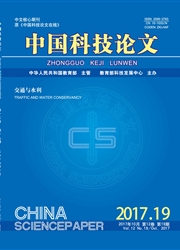

 中文摘要:
中文摘要:
以空气中稳定的乙酰丙酮钛为钛源,乙二醇为反应介质,采用多元醇工艺制备了聚羟基乙酸钛前驱体微米棒,然后将前驱体热解或水解得到介孔TiO2.500℃热解得到的TiO2由于颗粒烧结,比表面积仅有16m2/g,孔隙率为0.05 cm3/g;沸水中水解得到的TiO2比表面积与孔隙率与热解得到的TiO2相比大大提高,分别为240m2/g和0.30 cm3/g.最后对锐钛矿介孔TiO2进行电化学性能测试,结果表明水解制备的TiO2由于丰富的介孔结构以及大的比表面积,锂离子扩散路径短,电荷转移极化小,因此倍率性能高于热解制备的TiO2.
 英文摘要:
英文摘要:
The Ti glycolate microrod has been prepared by a polyol process, with titanium acetylacetone which is stable in air as a Ti source, and ethylene glycol as the reaction medium. Then the mesoporous TiO2 was obtained by the pyrolysis and hydrolysis of the Ti glycolate. As the result of the sintering of TiO2 particles in the pyrolysis process at 500 ℃, the BET specific surface ar ea of the mesoporous anatase TiO2 is only 16 m2/g, and its porosity is 0. 05 cm2/g. In contrast, the mesoporous anatase TiO2 synthesized by the hydrolysis in boiling water shows higher specific surface area and porosity, which were 240 m2/g and 0. 30 cma/g, respectively. The electrochemical performances of the mesoporous anatase TiO2 were compared. The hydrolytic TiO2 ex hibits better rate performance than the pyrolytic TiO2, due to its shorter lithium ion diffusion path and smaller charge transfer polarization as the result of abundant pore structure and high specific area.
 同期刊论文项目
同期刊论文项目
 同项目期刊论文
同项目期刊论文
 Comparison of the rate capability of nanostructured amorphous and anatase TiO2 for lithium insertion
Comparison of the rate capability of nanostructured amorphous and anatase TiO2 for lithium insertion Aligned Titania Nanotubes as an Intercalation Anode Material for Hybrid Electrochemical Energy Stora
Aligned Titania Nanotubes as an Intercalation Anode Material for Hybrid Electrochemical Energy Stora 期刊信息
期刊信息
